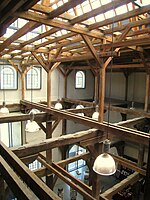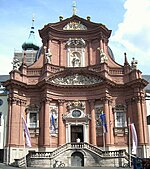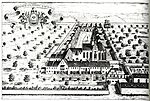Würzburger Stein
Vineyards of Germany

Würzburger Stein is a vineyard in the German wine region of Franconia that has been producing a style of wine, known as Steinwein since at least the 8th century. Located on a hill overlooking the Main river outside the city of Würzburg, the vineyard is responsible for what may have been the oldest wine ever tasted. In addition to being one of Germany's oldest winemaking sites, at 85 hectares (210 acres), the vineyard is also one of Germany's largest individual plots.Today the vineyard is one of the warmest sites in the Franconia wine region and is planted primarily to Riesling and Silvaner.
Excerpt from the Wikipedia article Würzburger Stein (License: CC BY-SA 3.0, Authors, Images).Würzburger Stein
Rotkreuzsteige, Würzburg Grombühl
Geographical coordinates (GPS) Address Nearby Places Show on map
Geographical coordinates (GPS)
| Latitude | Longitude |
|---|---|
| N 49.806666666667 ° | E 9.9305555555556 ° |
Address
Rotkreuzsteige
Rotkreuzsteige
97080 Würzburg, Grombühl
Bavaria, Germany
Open on Google Maps










